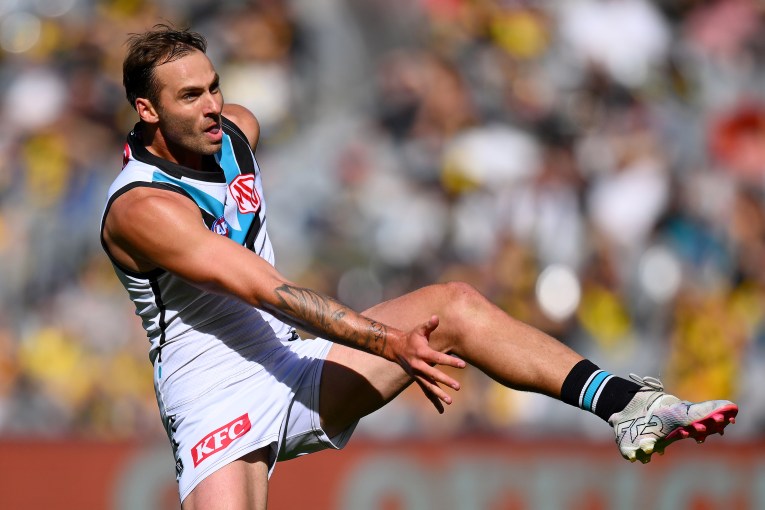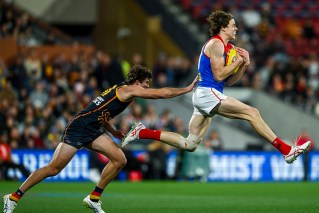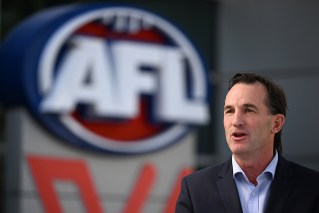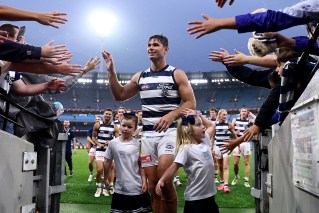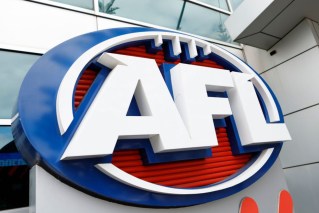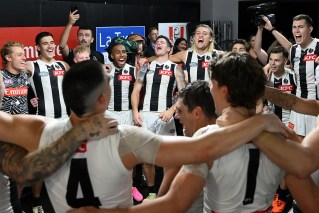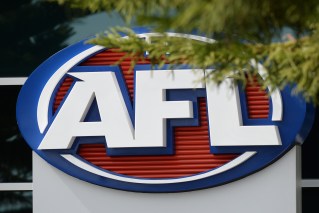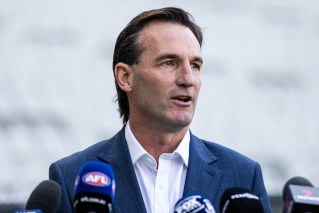Nathan Burke: Technology is not solving the AFL’s ills

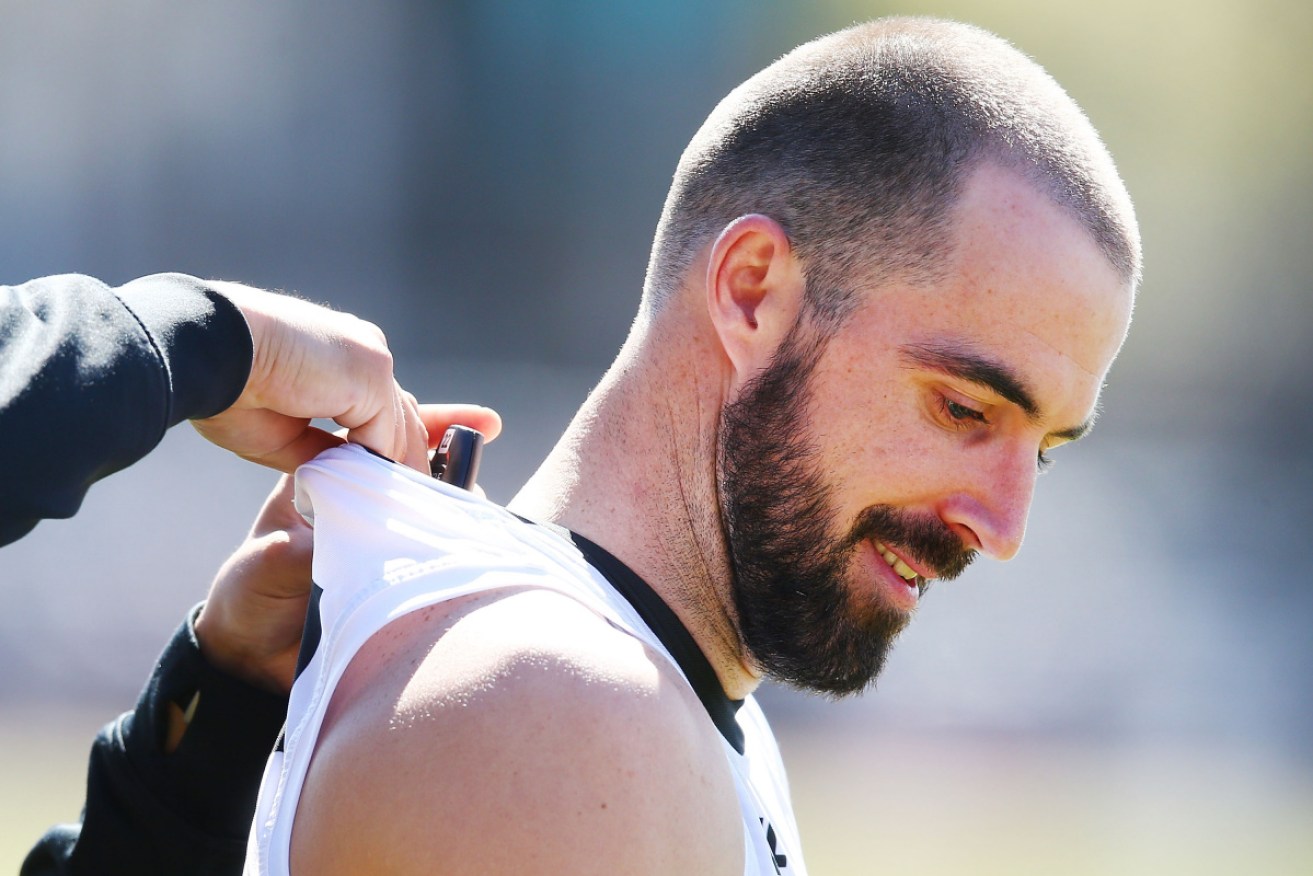
Magpie Steele Sidebottom gets his GPS tracker fitted. Photo: Getty
There’s an increasing debate about technology and whether it is helping or hindering our game. For mine, new thinking could well help players and clubs into the future, but mostly is yet to be properly utilised.
Forget the unending debate about the score review system.
That one is not going to be settled until the AFL gets serious about purchasing some decent technology and applying it effectively.
We now have Spidercam, GPS tracking and heat map readouts, but on the whole technology has yet to really affect the way the game is played.
This is despite two areas crying out for technological intervention or new ways of fixing problems and that is injury management and goalkicking.
While both areas have profound effects on a team’s fortunes, it is staggering to see that in both those areas – with plenty of resources –that troubles persist.
Let’s look at injuries to start. The number of games lost per club to injury is actually growing year on year.
In 2018 clubs lost on average a total of 163 games across its 40 players in the 22-game season.
The closest year to that in the past two decades was 2013, when the figure was 158.1, but it was only 141.3 in 2017 and 139.8 the season before.
Things are getting worse and while we know some of that has been affected by more conservative concussion management, it is clear that hamstring strains remain the No.1 reason that an AFL footballer is sidelined.
Hamstring injuries rose from 5.35 new incidences per club in 2017 to 6.35 last season.
Clubs were without players who suffered hamstring strains for, on average, 25.19 games last year, also up from 18.87 the previous season, and the recurrence rate was 20 per cent, from 14 per cent.
Considering the technology available to clubs, these injury stats are dreadful.
Every club now have on-site muscle scanning equipment, strength-testing equipment, pilates reformer beds and assorted variations on altitude chambers, heat rooms and even zero-gravity treadmills to utilise.
And let’s not forget the rehab technology, which includes hydrotherapy baths, ice baths and compression clothing designed to remove lactic acid build up after exercise. We also inject players with cow’s blood and various other substances designed to repair muscles.
Of course all of this is managed by a plethora of exercise scientists, doctors, surgeons, physiotherapists, myotherapists and numerous massage technicians. All of these professionals want for nothing in terms of technological help.
The medical area of clubs exploded so quickly in the early 2000s the AFL was forced to bring in a salary cap for football department spending.
They were concerned the gap between those who could afford all the staff and equipment and the clubs who couldn’t was growing too large and affecting outcomes.
Perhaps if we had known then what we know now – that more staff doesn’t actually mean better results – we would not have needed these restrictions.
Now I’m no doctor, but it’s my view that soft-tissue injuries are increasing because the modern player is actually mollycoddled, with strength not a priority. During the season they rarely train to any level of muscle fatigue and never do anything without warming up for 20 minutes first.
Basically more time is spent lengthening the muscle through stretching and yoga than strengthening the muscle.
In the end we have muscles that can only operate in perfect conditions and when asked to do anything out of the ordinary, they give up.
The other area where technology has been used, but is yet to improve the game is goalkicking.
Many people believe the kicking skills of the game have not improved in recent years. I actually think they have. But not goalkicking.
The fact is general kicking is at the highest overall standard it has ever been. But in front of goals it is another story.
Whether it is biomechanics or mental strength that is letting the players down when trying to score, I am not sure.
With all the videoing and analysing of techniques, of rehearsing in rooms with simulated crowd noise, there is no doubt that kicking for goal is not improving.
Take my old team, St Kilda. It has kicked more goals than behinds in only three of its 14 games this season.
Perhaps a return to the good old days of hard training, more time on the track and not being paranoid about a bit of mud on a field may be the cure.
I do know that the length of the pre-season, which the president of the AFLPA whinged about this week, is not the problem. Pre-seasons used to be longer and injuries were less.
Perhaps we should cut the three-week Christmas break down to one. I’d love to be in the room when that is put to the AFLPA. Maybe even video it for later analysis.
Nathan Burke is a former St Kilda captain who played 323 AFL games for the Saints, winning three Trevor Barker Awards as best-and-fairest player.
